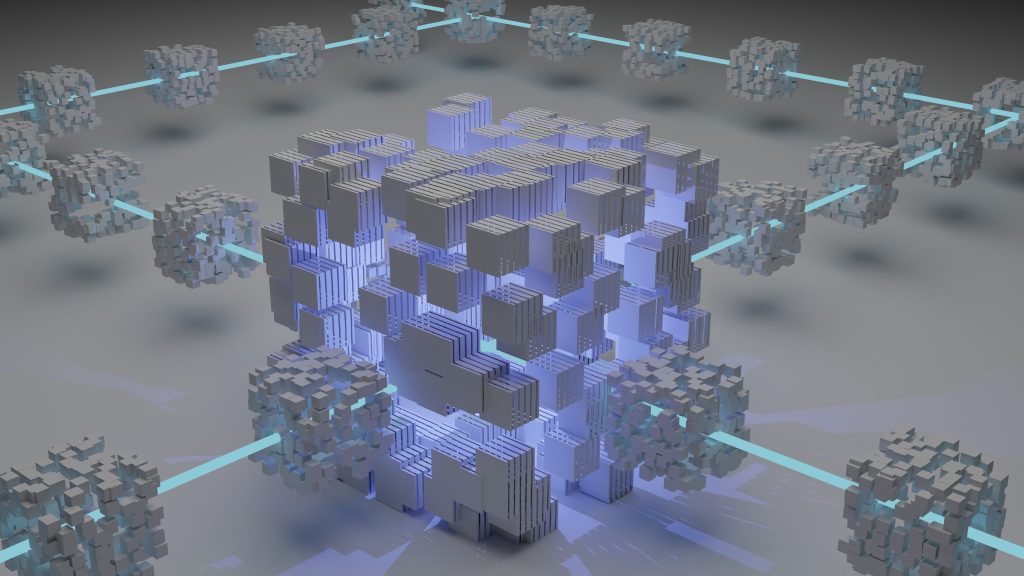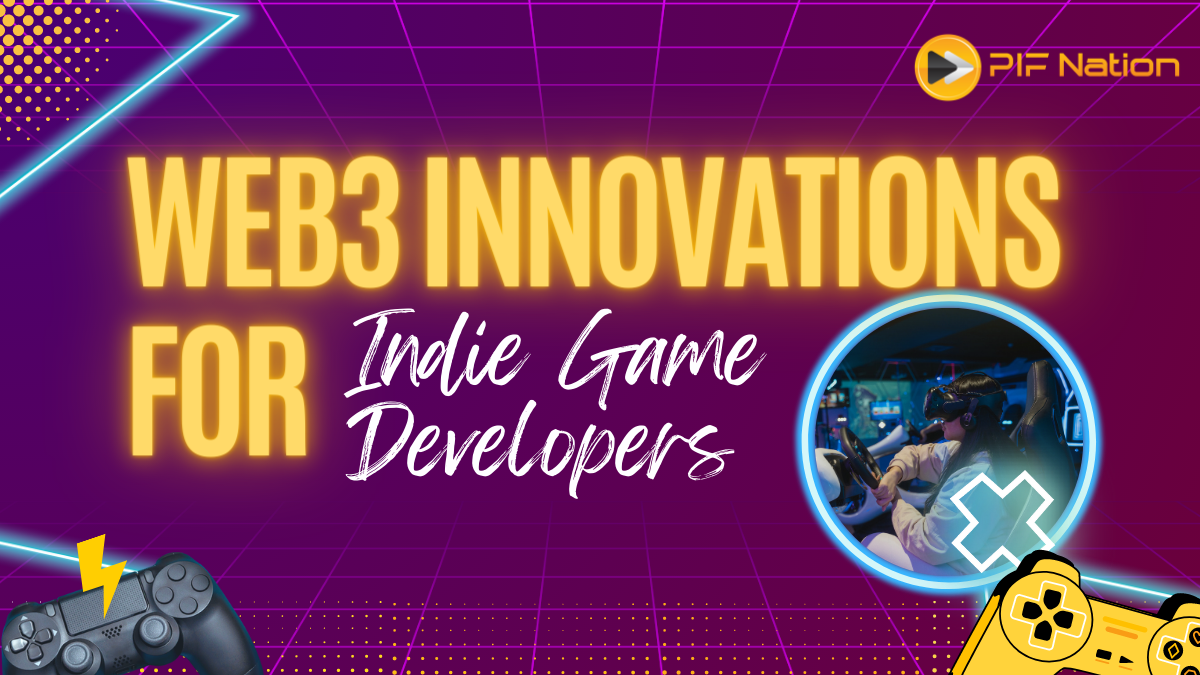The gaming world is now slowly being enabled and empowered by Web3 technologies. In this blog, we will unravel the impact of Web3 on the world of indie games. By harnessing the power of this advanced Internet model, indie game developers are exploring a wealth of opportunities to push boundaries and redefine the gaming industry.
Understanding Web3
So, what exactly is Web3? Simply put, Web3, or Web 3.0, represents the next generation of the internet, a transition from our current Web2 era. This revolutionary paradigm is geared towards making the internet more intelligent, contextual, and tailored to individual users. It’s not just an upgrade; it’s a transformative leap in how we interact with online content.
How Web3 differs from Web2
While Web2 represented the social web with user-generated content, Web3 took it a notch higher. It introduces decentralization, trustless protocols, and intelligent interfaces to put users back in control of their data. The focus is on peer-to-peer interactions without intermediaries, which means more transparency, more power to the users, and a broader scope for innovation.
The Pillars of Web3: Blockchain, Decentralization, and Cryptocurrency
Web3 is underpinned by three key components that set it apart: blockchain technology, decentralization, and cryptocurrency.
- Blockchain technology provides a secure, transparent, and tamper-proof digital ledger. This technology is the cornerstone of Web3, allowing it to operate in a trustless environment where transactions and interactions are verified without a central authority.
- Decentralization is a critical aspect of Web3. Unlike the centralized systems of Web2, Web3 is based on distributed networks that are not controlled by any single entity. This model reduces the risk of censorship and enables a new level of digital freedom.
- Lastly, cryptocurrency, the digital asset class, provides a secure and efficient means of transaction in this decentralized digital world. With it, users can engage in direct transactions, removing the need for intermediaries such as banks or payment processors.
Web3 and the Gaming Industry: A Rising Synergy
Some indie game developers now use Web3 to deliver immersive, interactive experiences. By leveraging blockchain for in-game assets, incorporating cryptocurrencies for transactions, and enabling decentralized game distribution, they’re adding a new layer of innovation and redefining how games are created, distributed, and played.
The following sections will explore the intersection of indie game development and Web3. We’ll examine how indie developers can harness blockchain technology, cryptocurrencies, VR/AR, NFTs, and DAOs to create engaging, immersive, and next-gen gaming experiences.
Unlocking New Frontiers: Web3 Opportunities for Indie Game Developers
As Web3 technology shapes the internet’s future, it opens many opportunities for indie game developers. Here are some key possibilities that Web3 offers:
- Decentralization: With a decentralized infrastructure, indie game developers can create peer-to-peer gaming experiences. They no longer have to rely on third-party platforms or servers, ensuring greater autonomy and flexibility.
- Tokenization: Web3 allows game assets to be tokenized and traded, creating a new marketplace for gamers. Developers can generate additional revenue by selling unique in-game assets or by allowing players to trade among themselves.
- Interoperability: With Web3, game developers can build universes where assets and progress can be transferred between different games, fostering a new level of continuity and immersion.
The Web3 Challenge: Navigating the New Terrain
While Web3 is undoubtedly full of potential, it’s not without its challenges. Here are some hurdles indie game developers might encounter:
- Technical complexity: Implementing Web3 technology can be complex. Developers must familiarize themselves with blockchain programming and deal with scalability and transaction costs.
- Regulatory uncertainty: The legal landscape for Web3 technologies is still evolving, which could pose regulatory challenges, particularly with aspects like cryptocurrency and asset tokenization.
- User adoption: Despite its benefits, Web3 still needs to gain broader acceptance among gamers. Developers must create experiences that utilize Web3’s features and are user-friendly to encourage adoption.
Blockchain and Smart Contracts: An Overview

Blockchain technology and smart contracts form the backbone of Web3. A blockchain is a distributed, immutable ledger and smart contracts are self-executing contracts with the terms of the agreement directly written into code. These two technologies can create a secure, transparent gaming environment that empowers developers and players.
The Power of Blockchain for Indie Game Developers
Blockchain technology is transformative for indie game developers, offering:
- Security and Transparency: The decentralized nature of the blockchain ensures secure transactions and interactions. It’s nearly impossible to alter or falsify data, leading to increased trust among players.
- True Ownership: Blockchain allows for the tokenization of in-game assets. This means players can truly own their in-game items, trade them freely, or use them across different gaming platforms.
- Provable Scarcity: Blockchain technology can prove the rarity of digital assets. This scarcity can create value and foster a robust economy within the game.
Smart Contracts in Action: Game Development Use Cases
Smart contracts can automate various aspects of gaming, increasing efficiency and reducing reliance on intermediaries. For instance, in the game ‘Axie Infinity’, players can breed, raise, and battle virtual creatures called Axies. The breeding process is governed by smart contracts, which dictate the traits of the offspring Axie based on its parents. This introduces an element of surprise and uniqueness, as players don’t know what traits their bred Axie will possess.
Virtual Reality, Augmented Reality, and Web3 in Indie Gaming
In the rapidly evolving gaming world, no technologies have more potential to redefine our experiences than Virtual Reality (VR) and Augmented Reality (AR). In combination with Web3, these technologies present opportunities for indie game developers.
Embracing New Realities: VR and AR in the Web3 Ecosystem
At their core, VR and AR offer immersive experiences that transcend the physical confines of traditional gaming. While VR transports users into entirely digital realms, AR overlays digital information onto our physical world, creating interactive experiences that blur the boundaries between reality and the virtual world.
When coupled with the decentralized nature of Web3, these technologies create infinite possibilities for creating personalized, engaging, and immersive gaming experiences. Here’s how VR and AR can transform indie games:
- Enhanced immersion: VR and AR can make game worlds more realistic and engaging. This can provide a whole new level of immersion, ensuring gamers are not just players, but active participants in the game world.
- Personalized experiences: With the capabilities of Web3, VR and AR experiences can be tailored to individual gamers. This includes personal avatars, customizable game spaces, and adaptive gameplay.
- New business models: VR and AR can enable new ways to monetize games, such as premium virtual experiences or selling virtual goods and assets.
Non-Fungible Tokens (NFTs): Revolutionizing Indie Game Developments
NFTs represent a revolution in creating, owning, and trading digital assets. Unlike fungible tokens such as cryptocurrencies, each NFT is unique and can’t be replaced with another. This uniqueness allows NFTs to represent in-game assets such as characters, items, or land, offering true digital ownership to players. Here are the benefits NFTs bring to indie game developers:
- True ownership: NFTs allow gamers to own their in-game assets genuinely. This ownership can extend beyond the game, with players free to trade or sell their NFTs as they wish.
- New revenue streams: The sale and trade of NFT assets open up new monetization channels for developers. This could include initial sales, auctions, or receiving a fraction of all future trades of the NFTs.
- Enhanced game dynamics: The uniqueness of each NFT can make gameplay more exciting and dynamic. NFTs can carry their history, characteristics, and enhancements from one owner to the next.
Revolutionize Your Indie Game, Partner with PIF Nation
In the Web3 era, the promotion of your game is just as crucial as its development. That’s where the PIF Nation’s Quest platform step in to transform the way indie game developers engage with players and grow their gaming community.
Quest offers an innovative platform where you, as a game developer, can promote your games by releasing various Quests. These can be anything from beta game testing and surveys to in-game tournaments, contests, installations, and even streaming. It’s not just about promoting your game; it’s about building meaningful engagement and loyalty with your player base.
But what’s in it for the players? Players completing these Quests earn XP points, which they can then convert into PIF tokens through the XP Marketplace. It’s a win-win situation – you get valuable player input and engagement, while your players get rewarded for their participation.
At PIF Nation, we believe in the power of rewarding participation and building a mutually beneficial ecosystem. By partnering with us, you’re not just promoting your game – you’re building a community. You’re engaging with real players, gaining valuable feedback, and providing exciting, rewarding experiences. Click here to learn more about how Quest and PIF Nation can take your game to the next level.
